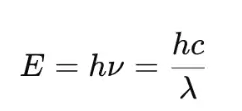Photons and phonons are fundamental concepts in the fields of quantum mechanics and solid-state physics, respectively. They represent quantised modes of energy, but their nature and the phenomena they describe are distinctly different. This article will delve into the characteristics, differences, and applications of photons and phonons, providing examples and relevant equations to illustrate these concepts.
Photons
Definition and Nature
Photons are the elementary particles of light and other forms of electromagnetic radiation. They are massless, chargeless particles that travel at the speed of light in a vacuum. Photons exhibit both wave-like and particle-like properties, a duality that is a cornerstone of quantum mechanics.
Properties
- Mass: Zero
- Charge: Zero
- Speed: c = 3 x 10^8 m/s (in vacuum)
Wave-Particle Duality: Exhibits interference and diffraction (wave properties) as well as photoelectric effect (particle properties).

Equations
Energy of a Photon:


Photon Momentum:

Examples and Applications
- Visible Light: Photons in the visible spectrum (400−700 nm) enable human vision.
- Solar Cells: Photons from sunlight excite electrons in semiconductor materials, generating electric current.
- Lasers: Coherent photons emitted from stimulated emission create highly focused and powerful light beams.
- Medical Imaging: X-ray photons are used in diagnostic imaging to view inside the human body.
Phonons
Definition and Nature
Phonons are quantised collective excitations or vibrations in a periodic, elastic arrangement of atoms or molecules in condensed matter, such as crystals and lattices. Phonons represent the quantum mechanical description of vibrational motion in solids.
Properties
- Mass: Effective mass depends on the material and phonon mode.
- Charge: Zero
- Speed: Depends on the speed of sound in the material.
- Energy: Quantised according to the vibrational modes of the lattice.
- Wave-Particle Duality: Exhibits wave-like properties (diffraction, interference) but is typically treated as quasi-particles in solid-state physics.
Energy of a Phonon:



Examples and Applications
- Heat Capacity: Phonons contribute to the specific heat capacity of solids, especially at low temperatures (Debye model).
- Thermal Conductivity: Phonons play a major role in the thermal conductivity of non-metallic solids. Heat is transferred through the lattice vibrations.
- Superconductors: Phonons interact with electrons in a way that can lead to the formation of Cooper pairs, which is essential for superconductivity.
- Acoustic Waves: Phonons are responsible for sound propagation in solids.
Key Differences Between Photons and Phonons
1. Nature and Origin:
- Photons: Electromagnetic waves; quantised electromagnetic fields.
- Phonons: Vibrational waves in a solid; quantised lattice vibrations.
2. Properties:
- Photons: Massless, travel at the speed of light, involved in electromagnetic interactions.
- Phonons: Quasi-particles with effective mass, travel at the speed of sound in a material, involved in thermal and mechanical interactions.
3. Equations and Quantisation:

4. Applications:
- Photons: Solar cells, lasers, medical imaging.
- Phonons: Thermal conductivity, heat capacity, acoustic properties.
Conclusion
Photons and phonons are both essential to understanding the physical world, each describing different aspects of energy and wave propagation. Photons, as carriers of electromagnetic force, are fundamental to optics and electromagnetism, while phonons, as carriers of vibrational energy in solids, are crucial to understanding thermal and mechanical properties of materials. Despite their differences, both photons and phonons are integral to the modern understanding of quantum mechanics and solid-state physics.




